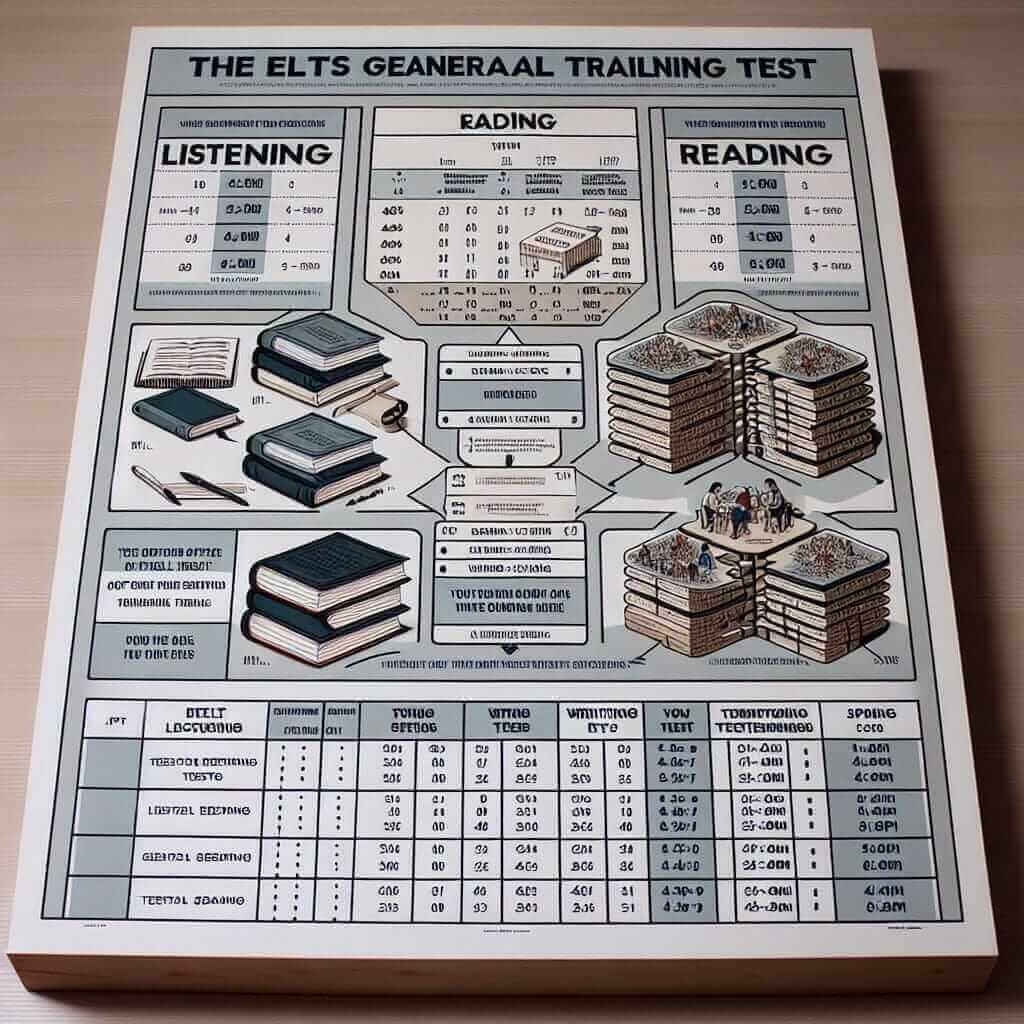The International English Language Testing System (IELTS) is a standardized test designed to assess the language proficiency of non-native English speakers. The IELTS General Training test is commonly taken by individuals seeking to migrate, work, or undertake non-academic training programs in English-speaking countries. Understanding the IELTS General Training format is crucial for achieving a high score. In this article, we will delve into the structure of this test, provide examples, and offer practical advice to excel.
Understanding the IELTS General Training Format
The IELTS General Training test is divided into four sections: Listening, Reading, Writing, and Speaking. The total test duration is approximately 2 hours and 45 minutes. Below is an overview of each section:
Listening Section
The Listening section lasts about 30 minutes and comprises four recorded monologues and conversations. Test-takers are required to answer 40 questions that assess their ability to understand main ideas, specific information, and the speakers’ opinions and attitudes.
Example:
In a previous IELTS Listening test, you might hear a monologue on a travel itinerary and be asked to complete a table with information about flight times and accommodations.
Common Pitfall:
Listening passively without anticipating the type of information you need to listen for can lead to missed answers. Always read the questions first to guide your focus.
Reading Section
The Reading section lasts 60 minutes and consists of three sections with texts taken from advertisements, official documents, newspapers, books, and magazines. There are 40 questions that test reading skills, such as skimming, scanning, and understanding logical argumentation.
Example:
A test might include an article on climate change policies followed by questions asking to match policy descriptions with specific details mentioned in the text.
Common Pitfall:
Failing to manage time properly. Allocate a set amount of time to each section and stick to it to ensure you can address all questions.
Writing Section
The Writing section is 60 minutes long and includes two tasks. Task 1 requires writing a letter (150 words) to respond to a situation, and Task 2 involves writing an essay (250 words) on a given topic.
Example:
Task 1 might prompt you to write a letter to a friend detailing your experience of a recent move to a new city. Task 2 could ask you to discuss the advantages and disadvantages of remote working.
Common Pitfall:
Overlooking Task 1 in favor of Task 2. Both tasks are crucial and should be given appropriate time. Remember, Task 1 is worth one-third of the writing score while Task 2 is worth two-thirds.
Speaking Section
The Speaking section takes about 11-14 minutes and is conducted as a face-to-face interview with an examiner. It comprises three parts: an introduction and interview, a long turn where you speak on a particular topic, and a discussion.
Example:
You might be asked to talk about your favorite book in Part 2, followed by Part 3 questions on the impact of reading habits on education.
Common Pitfall:
Speaking too briefly. Ensure you expand your answers with appropriate details and examples to show your fluency and coherence.

Applying Knowledge to IELTS Practice
Familiarizing yourself with the above format and practicing each section systematically is key. Here are some practical tips:
- Practice Active Listening: Listen to various English accents and focus on extracting key information.
- Enhance Reading Skills: Read different text types and practice skimming for main ideas and scanning for details.
- Refine Writing Techniques: Write letters and essays on various topics, adhering to word count and structure.
- Improve Speaking Fluency: Engage in conversations on a wide range of topics and practice giving detailed, coherent responses.
Common Mistakes and Misunderstandings
- Mismanaging time: Allocate specific time to each question and section to avoid rushing towards the end.
- Ignoring instructions: Pay close attention to the test instructions, especially regarding word limits and question requirements.
- Overlooking practice: Consistent and targeted practice is essential. Utilize official IELTS practice materials to familiarize yourself with test conditions.
Effective Study Practices
- Mock Tests: Regularly take full-length practice tests under timed conditions to build stamina and familiarity.
- Feedback: Seek feedback from teachers or peers to identify areas for improvement.
- Study Plan: Create a structured study schedule that covers all test sections.
Conclusion
Understanding the IELTS General Training format is pivotal for effective preparation. By knowing each section’s structure, common pitfalls, and employing strategic practice methods, you can enhance your chances of obtaining a high score. Remember, consistency and targeted practice are your best allies. Engage with fellow learners, share experiences, and explore further resources on our website to broaden your preparation.
Leave a comment below if you have any questions or share your IELTS tips with us! Happy studying!